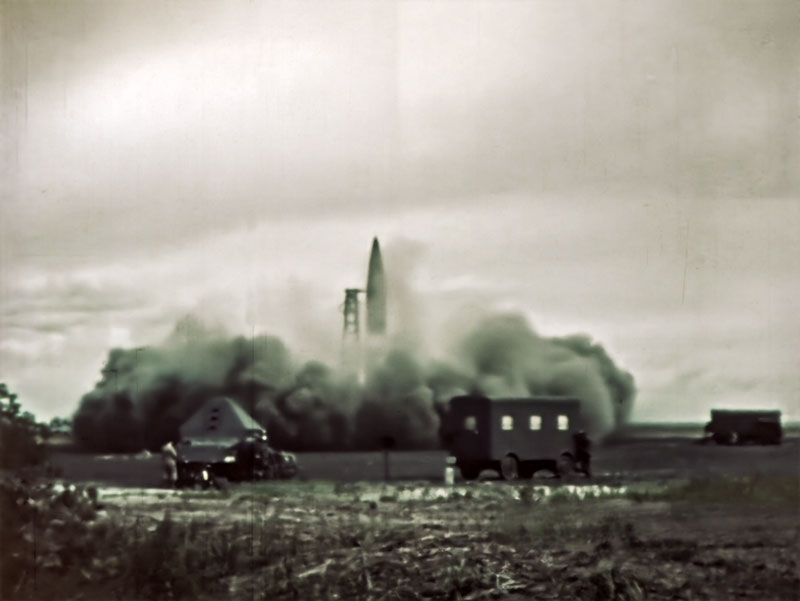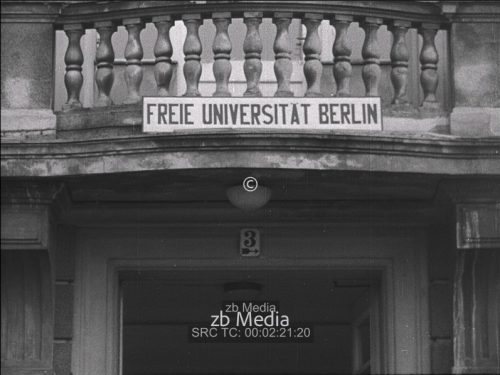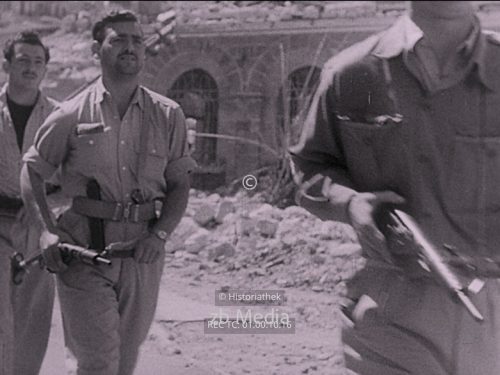A4 / V2 rocket tests Peenemünde 1944, colour photographs also showing Wernher von Braun and Heinrich Himmler. The footage was also shown to Adolf Hitler in 1944, who was in favour of the retaliation weapon (V-weapon) project. Film length 5:33. A licence fee of 11 x 30 seconds is charged to acquire a licence for the complete film.
A4 / V2 missile tests Peenemünde 1944
Description
A4 / V2 missile tests Peenemünde 1944
Historical Background
The A4 rocket tests at Peenemünde in 1944 were part of the German rocket program during World War II. The A4 rocket, also known as the V-2 rocket, was developed by Wernher von Braun and his team and was the world’s first ballistic missile.
Testing took place at the Peenemünde test site on the island of Usedom on the Baltic coast. Peenemünde was the main development center for the German missile program and housed a number of facilities, including test stands, production facilities and research laboratories. It was under the responsibility and supervision of the SS.
The A4 rocket was a groundbreaking technological achievement and was developed as a retaliatory weapon against the Allies. It had a range of about 320 kilometers and could carry a payload of about 1,000 kilograms. The rocket was fueled by liquid oxygen and alcohol and reached a speed of over 5,760 kilometers per hour.
The tests at Peenemünde were of great importance for the further development of the rocket. They allowed engineers and scientists to verify flight performance, test various systems and identify problems. The tests also helped put the missile into the production process and prepare it for wartime use. During the production of the rocket, SS concentration camp prisoners were maltreated to death in inhumane conditions in underground facilities.
Despite some setbacks and failures during the testing phase, the A4 missiles were further developed and eventually used in military operations in 1944. The V-2 missiles were used against targets in Europe, mainly in Britain, Belgium, and the Netherlands. They caused considerable damage and civilian casualties.
The missile tests at Peenemünde marked a significant milestone in missile development and laid the foundation for subsequent space research. Many of the German scientists involved in the program were recruited by the Allies after the war and played important roles in the development of space programs in the United States and the Soviet Union.






